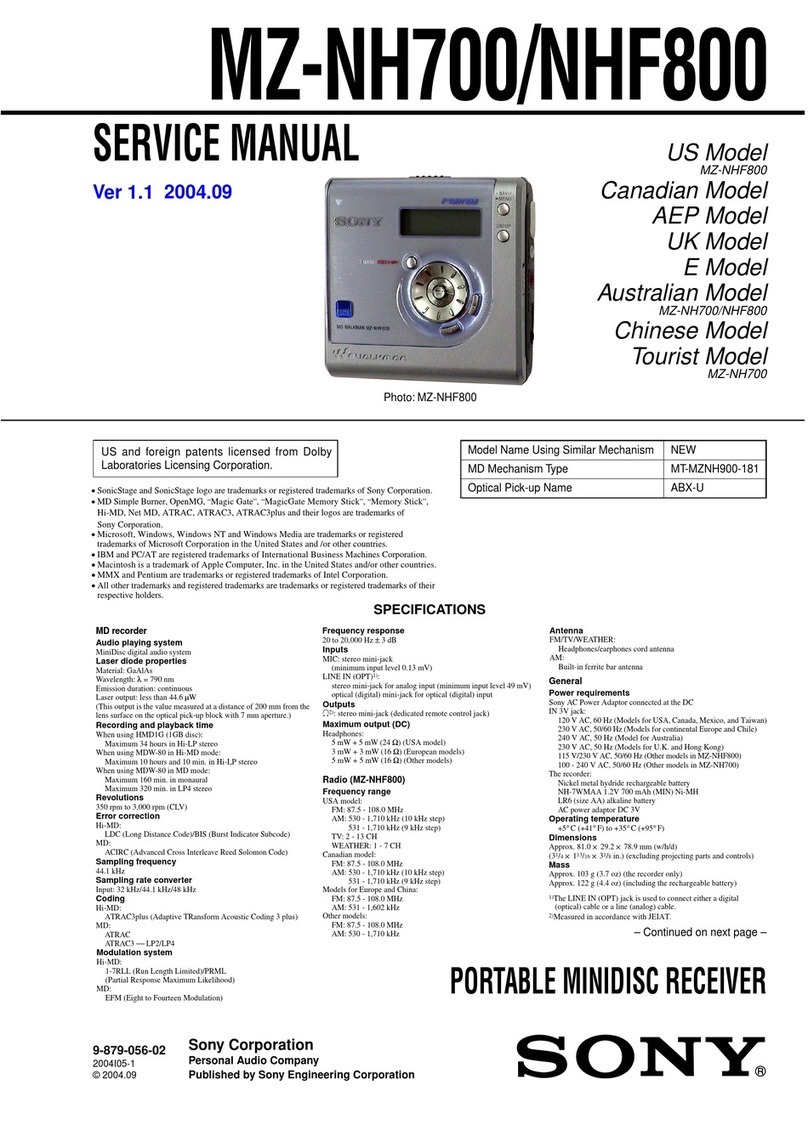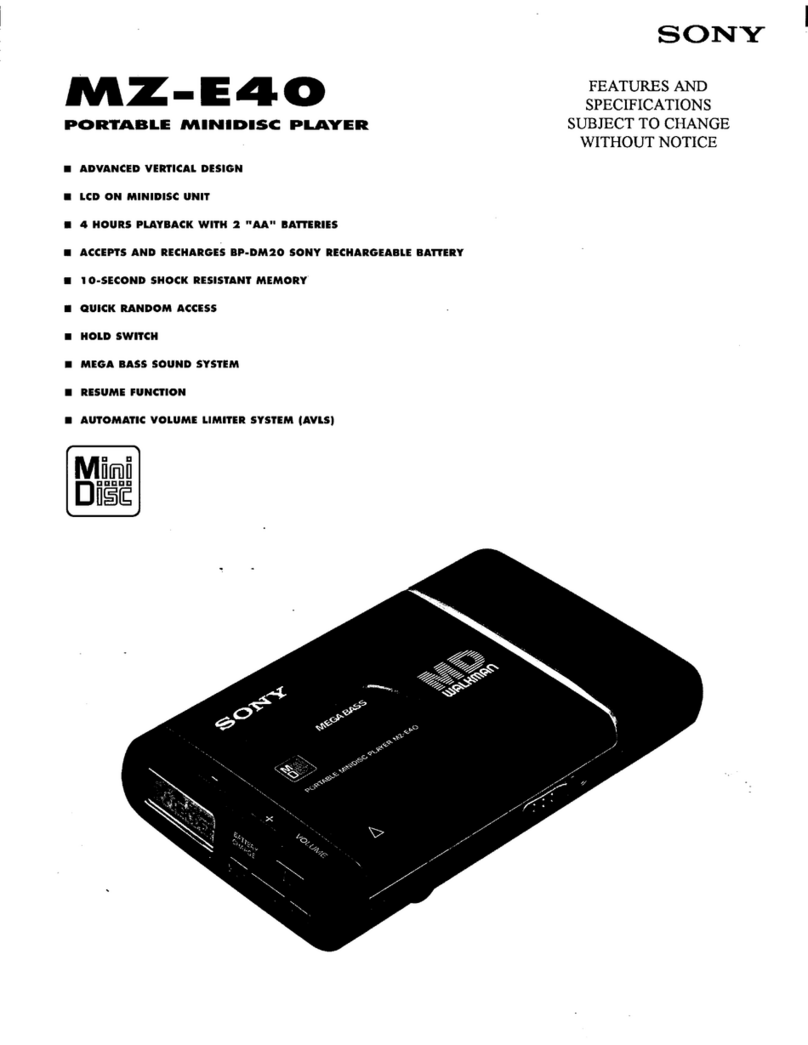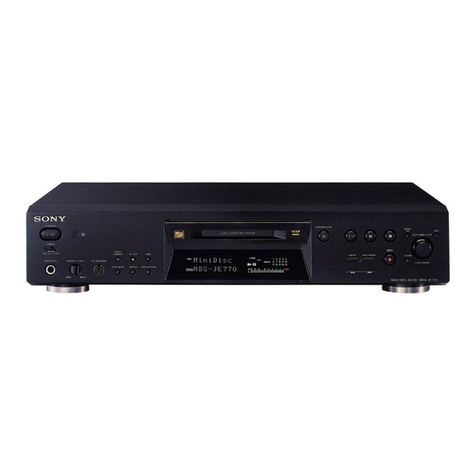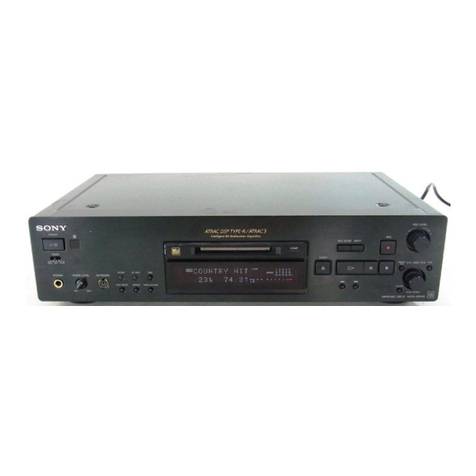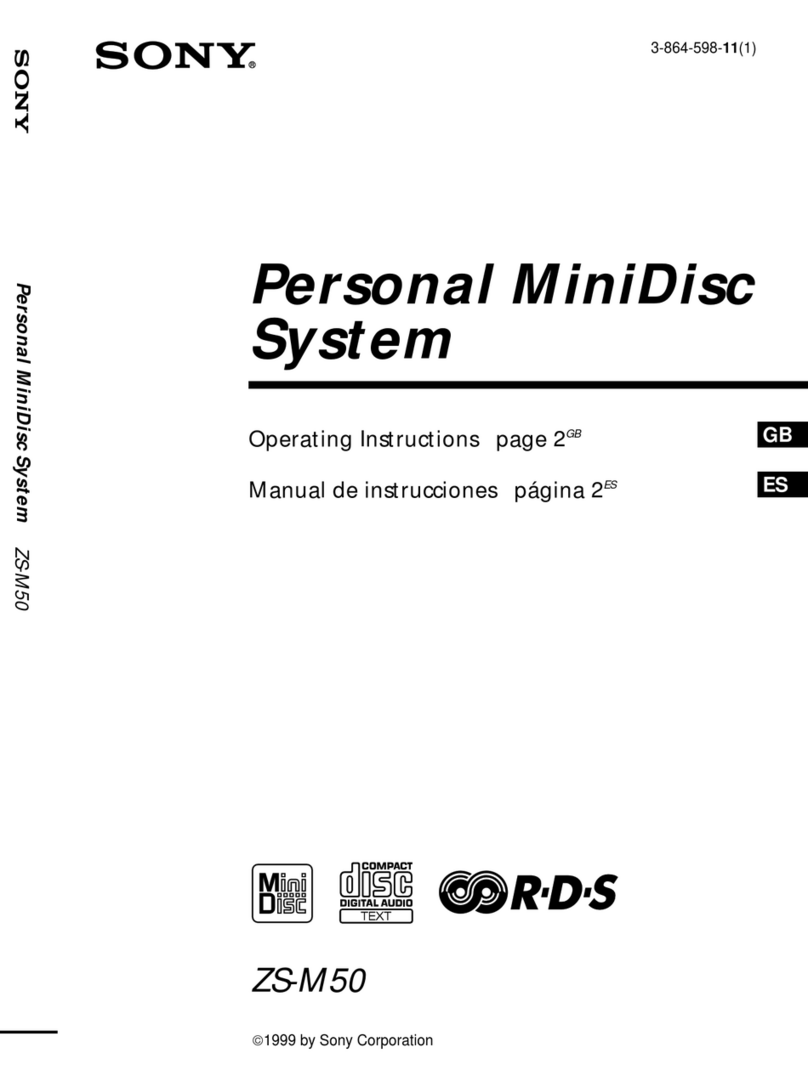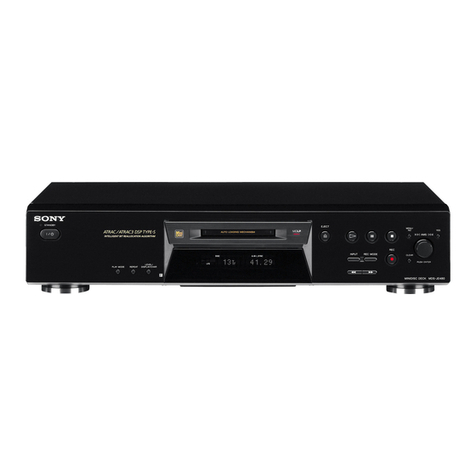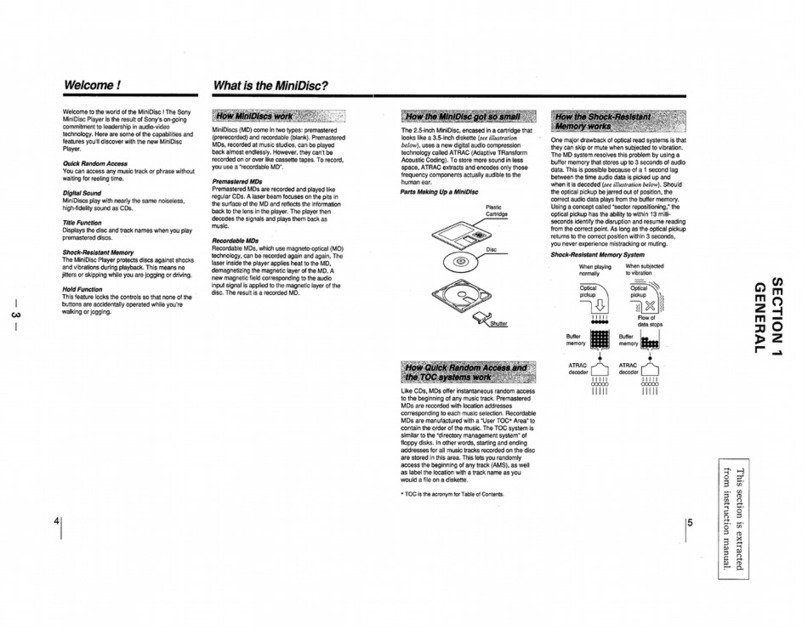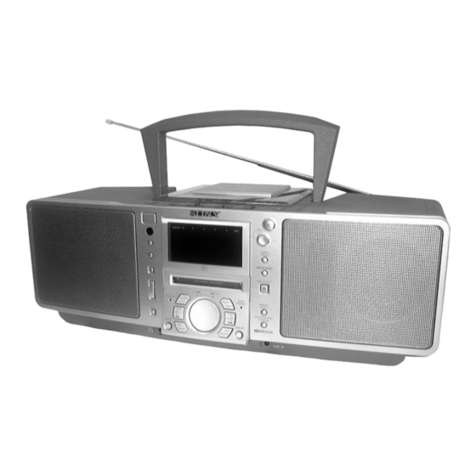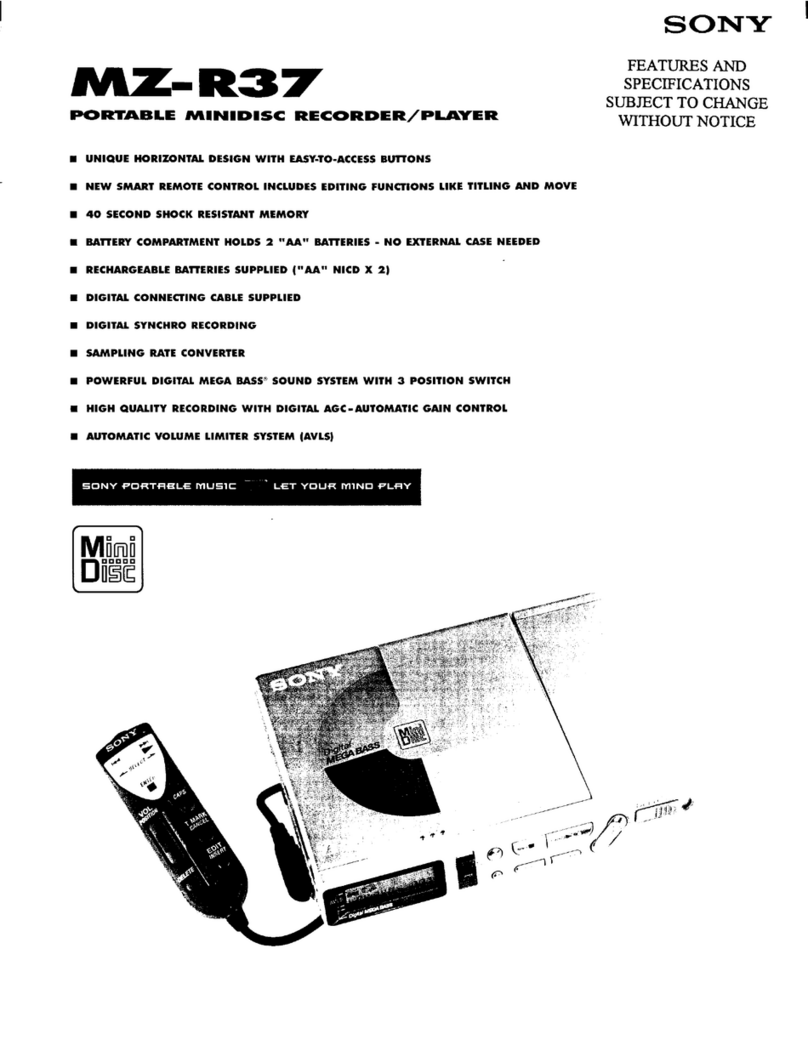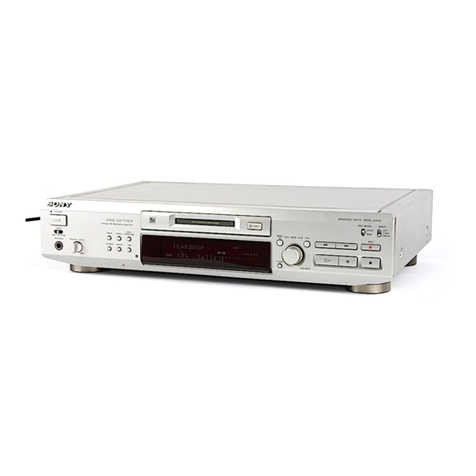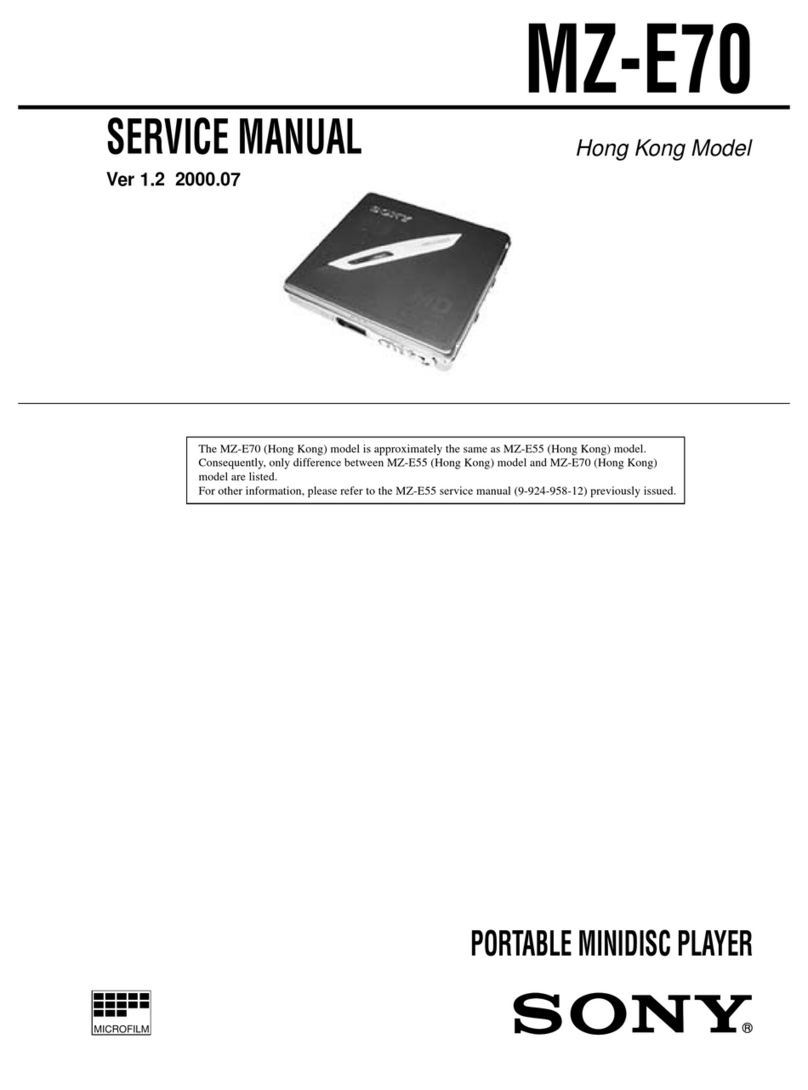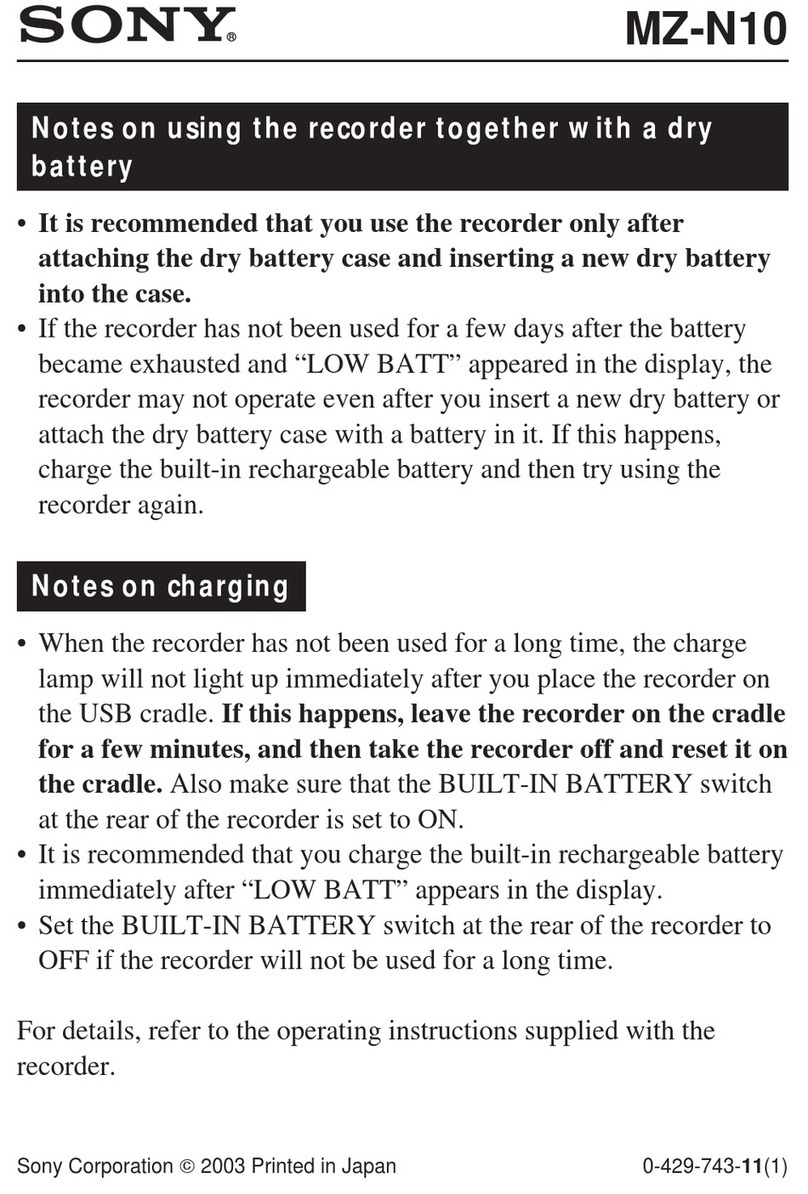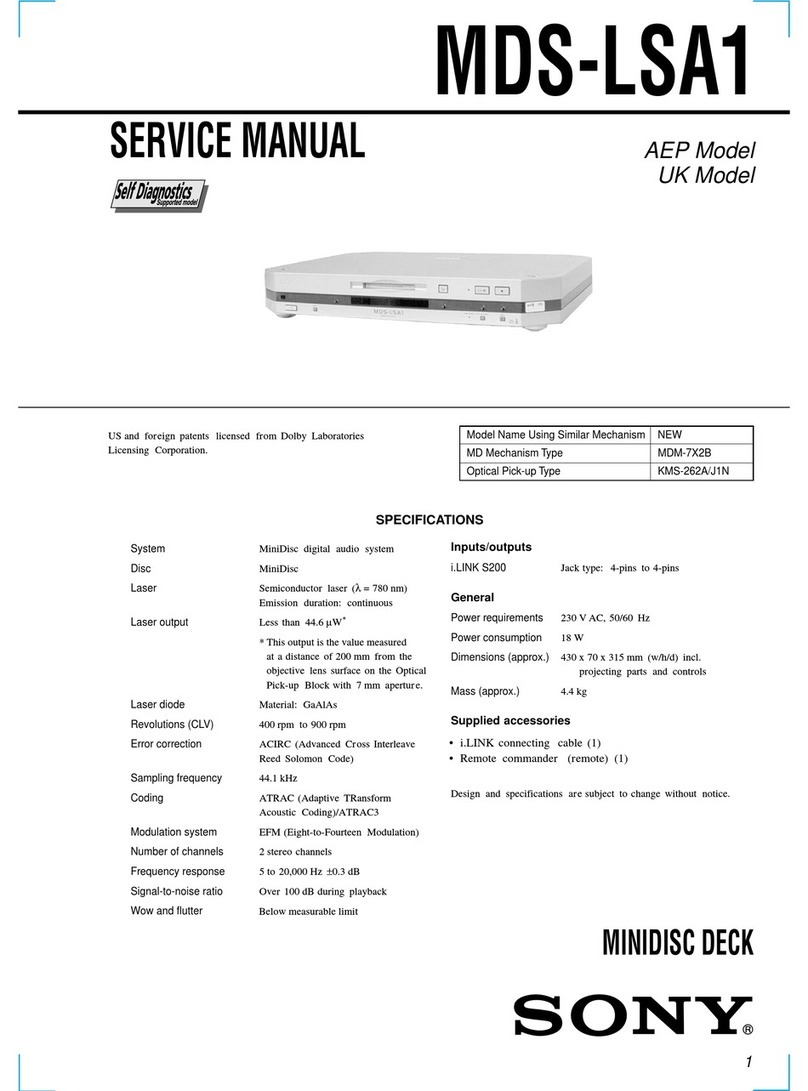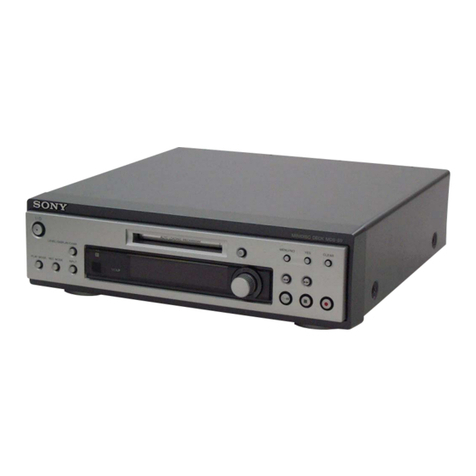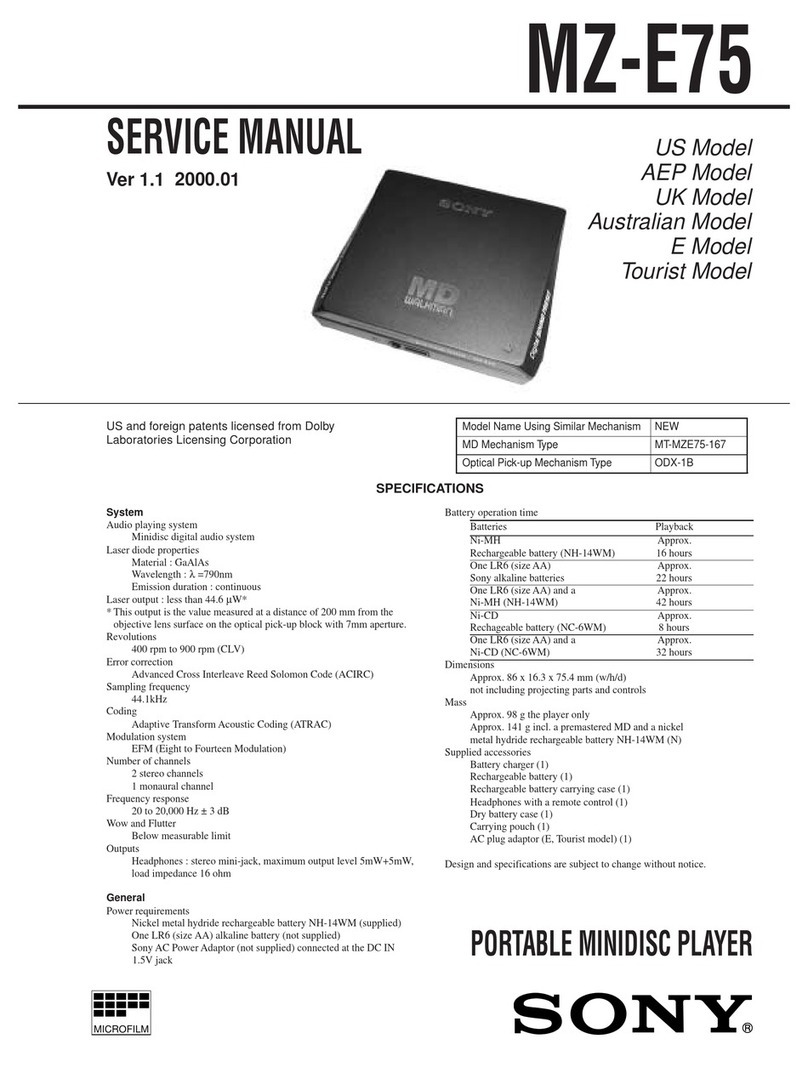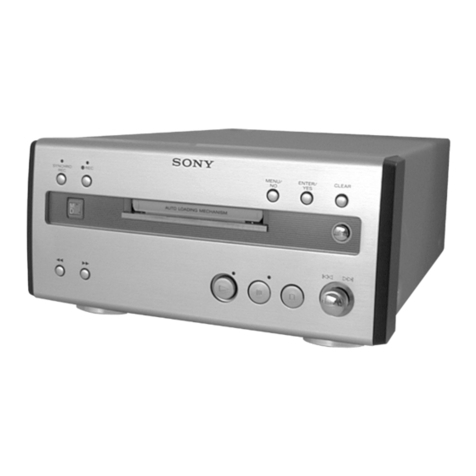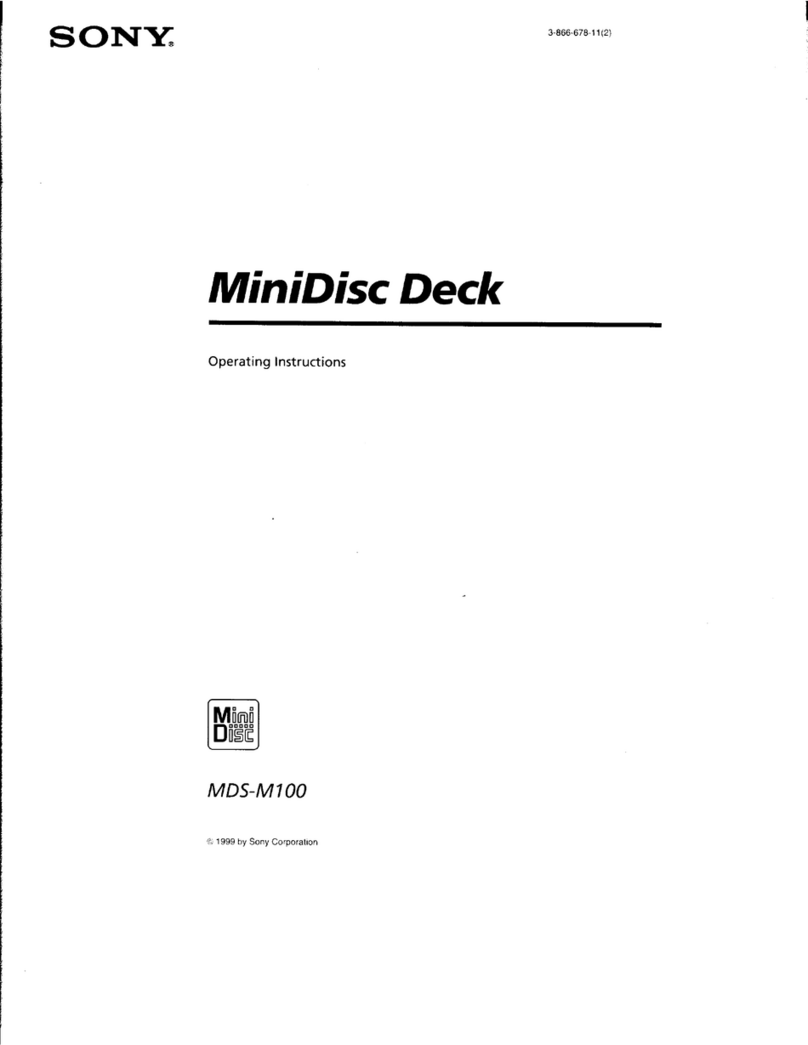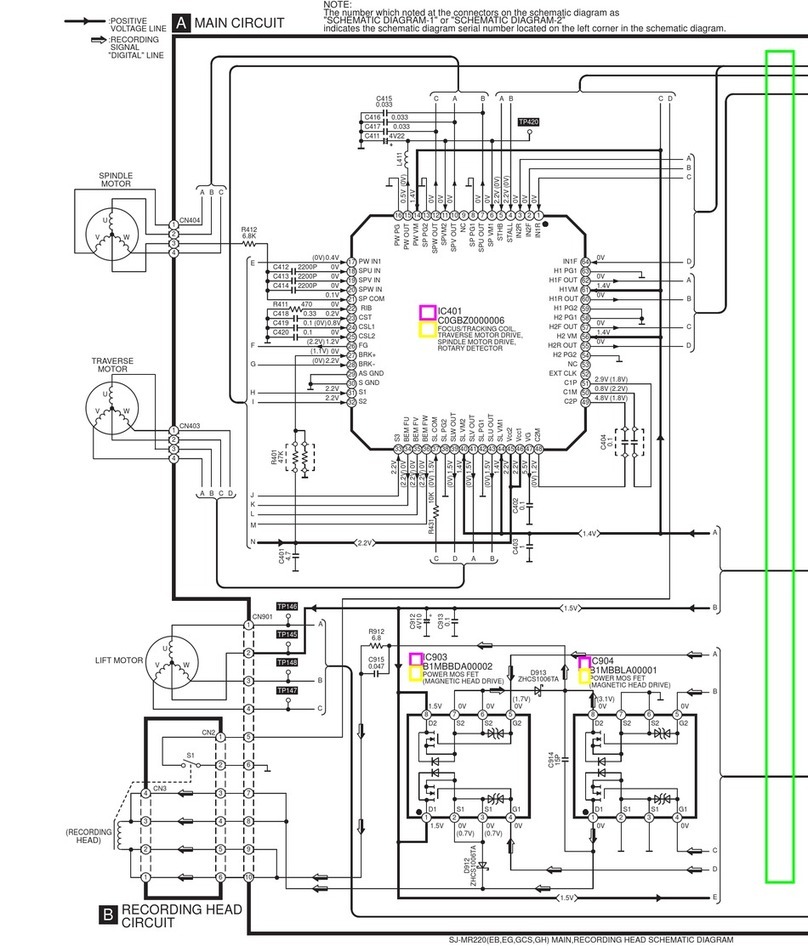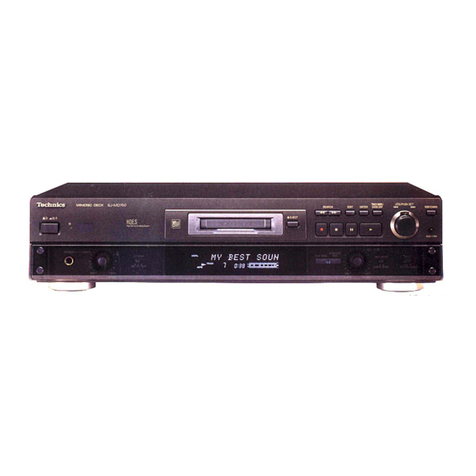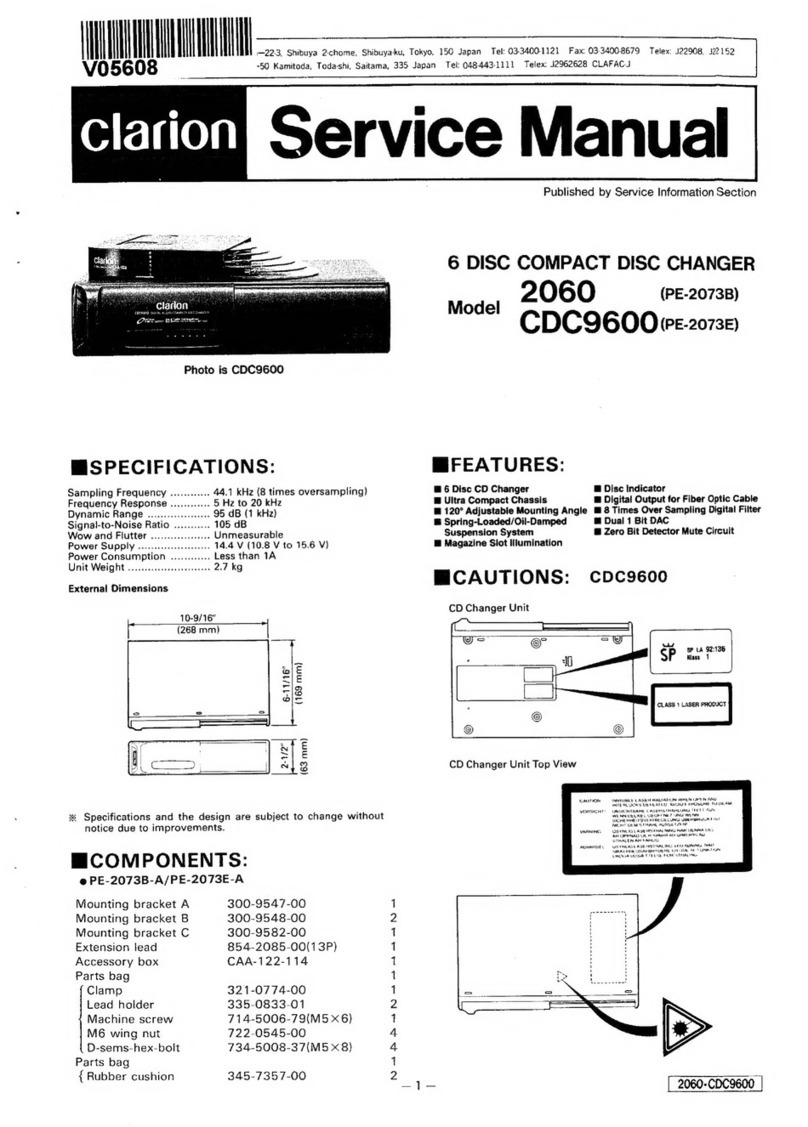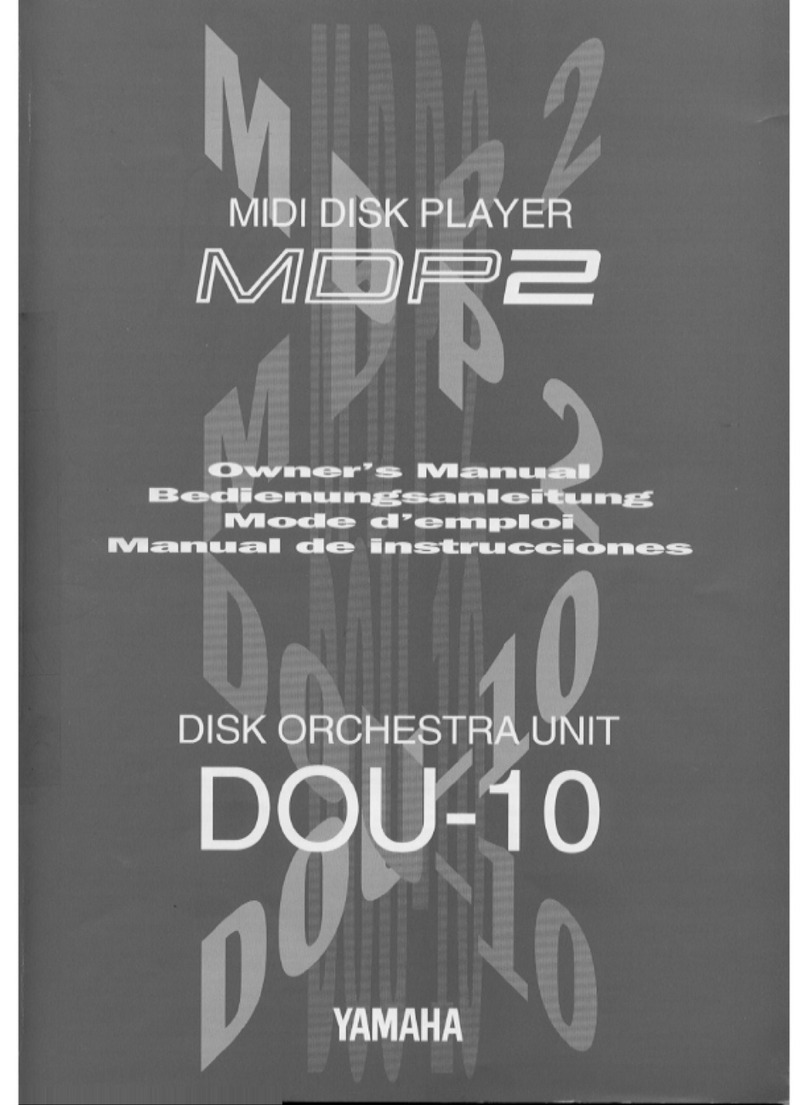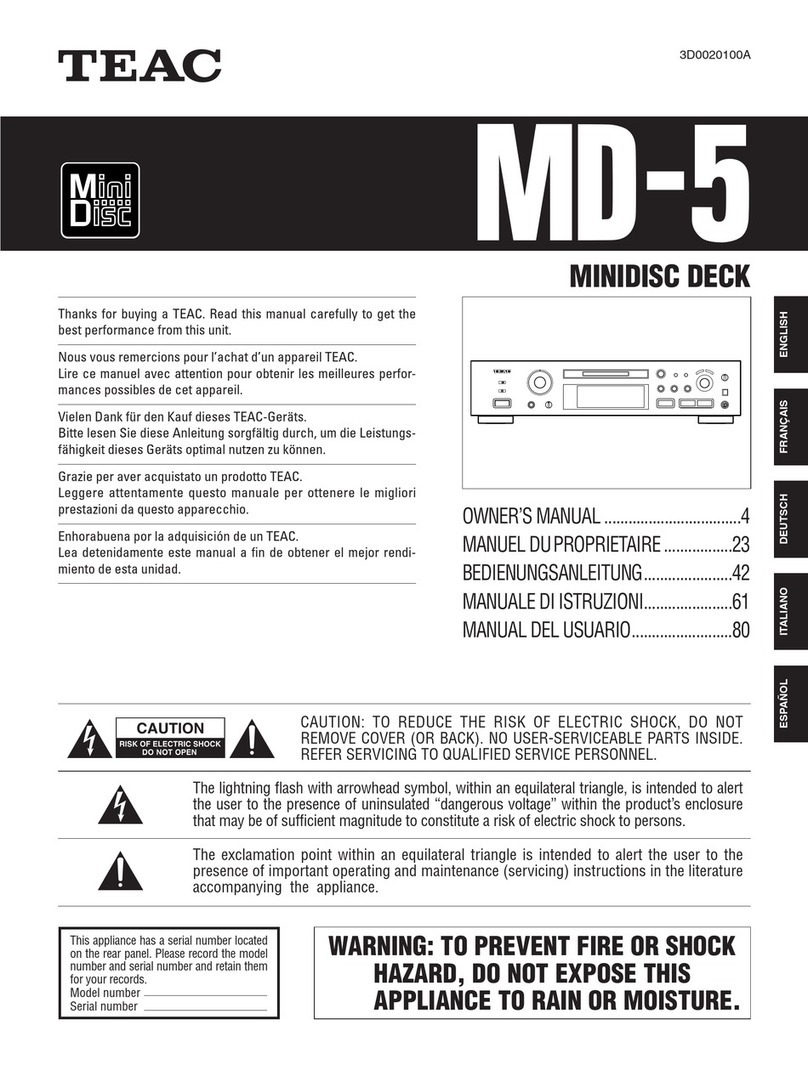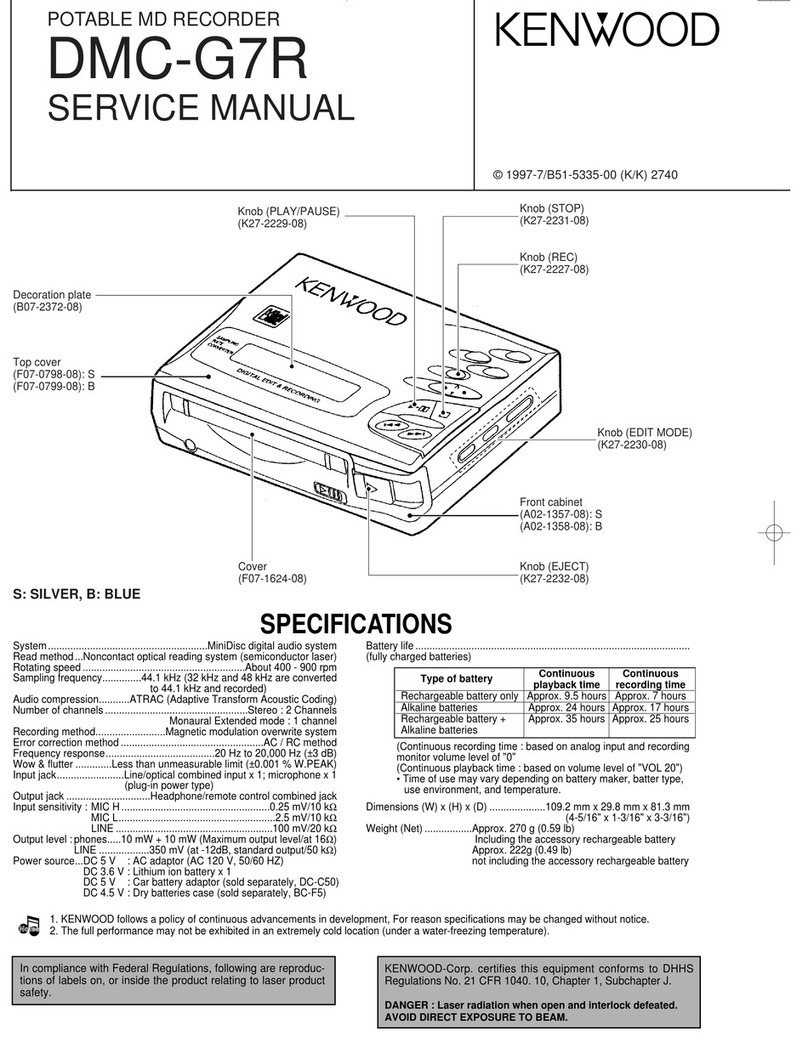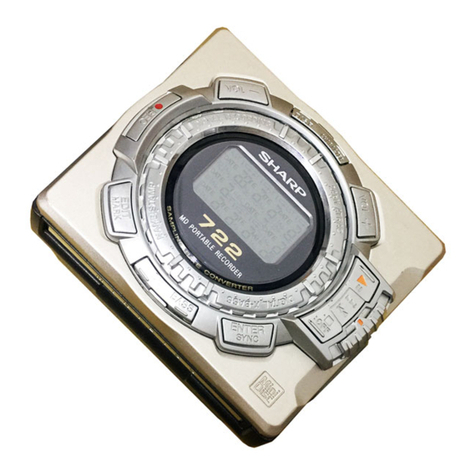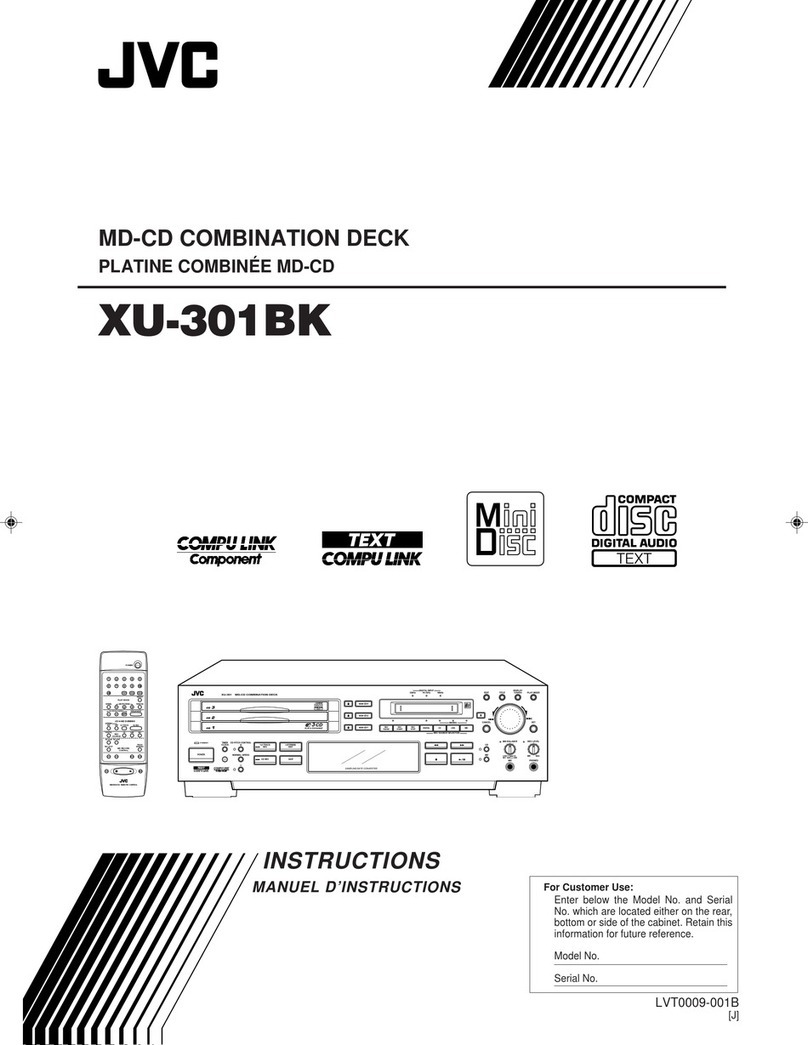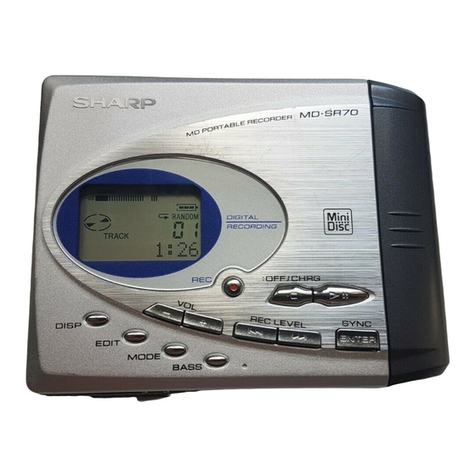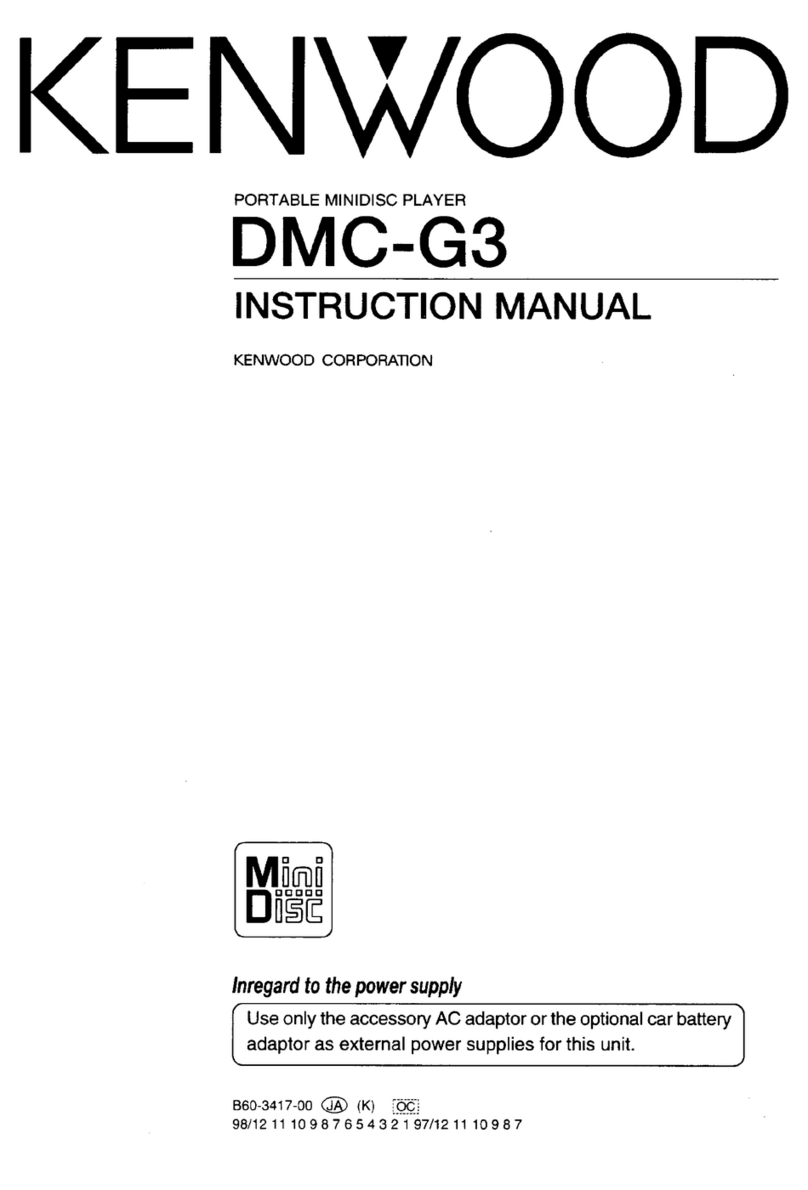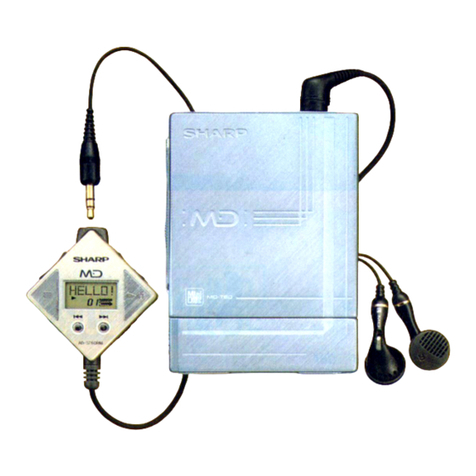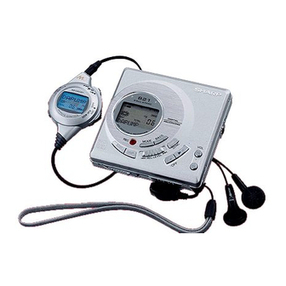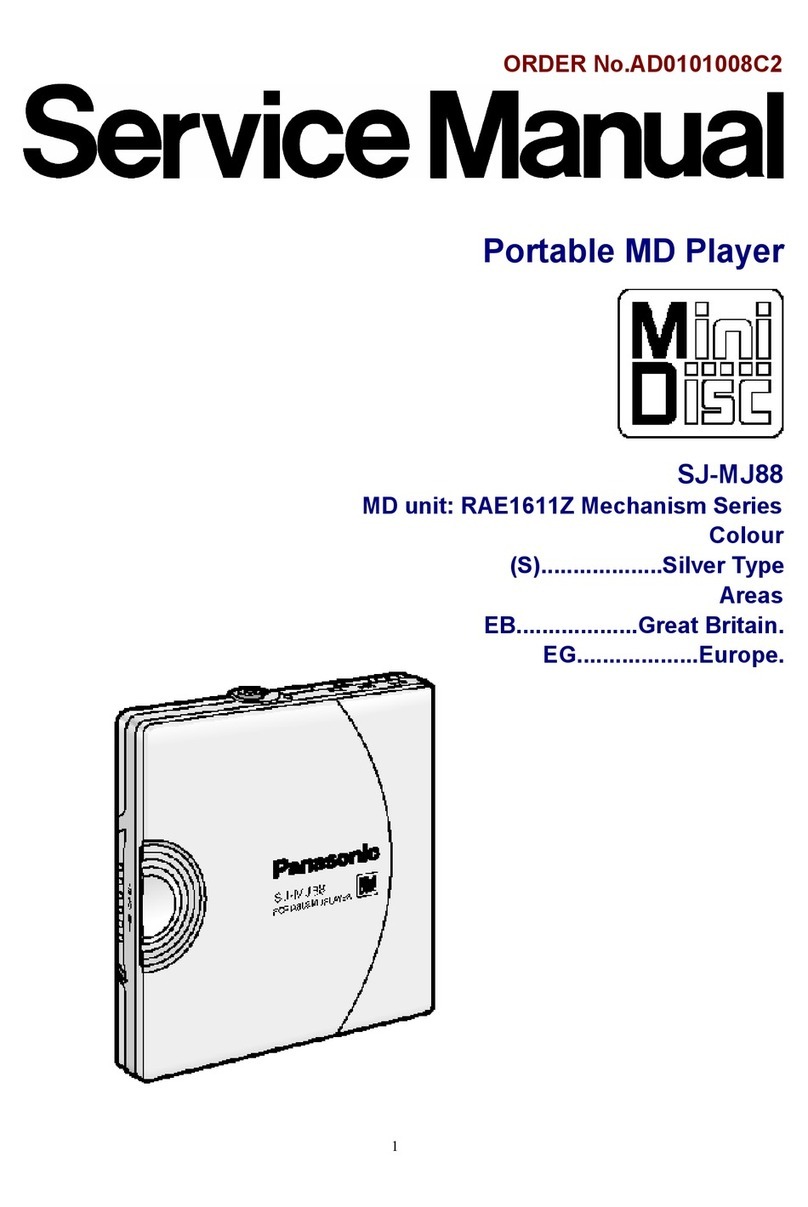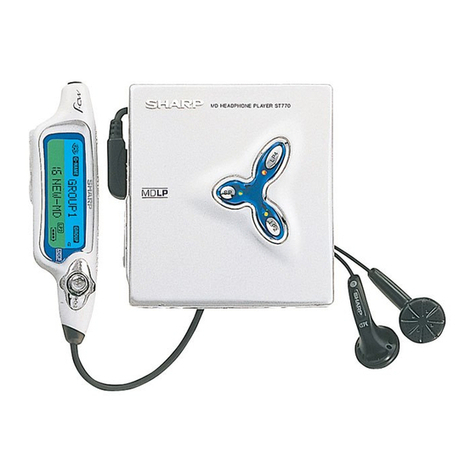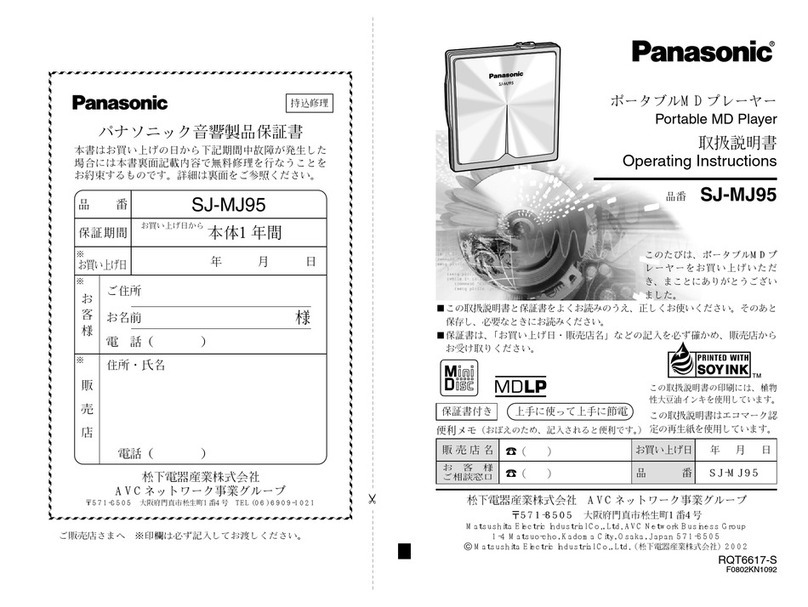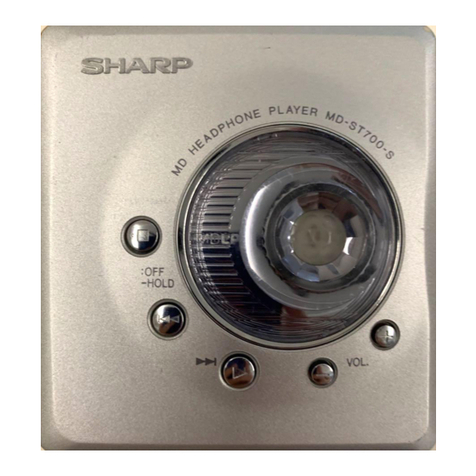2
ZS-M30
Modulation system
EFM (Eight-to-Fourteen Modulation)
Number of programme positions
2 stereo programme positions
Frequency response
20 - 20,000 Hz +1/–2 dB
Signal-to-noise ratio
Over 80 dB (during playback)
Wow and flutter
Below measurable limit
General
Speaker
Full-range: 8 cm (3 1 ⁄4 in.) dia., 4 Ωcone type (2)
Panorama sound: 5 cm (2 in.) dia., 12 Ωcone type (2)
Inputs
LINE IN (stereo minijack): Sensitivity 436 mV/870 mV
Outputs
Headphones jack (stereo minijack) (1):
For 32 Ωimpedance headphones
Maximum power output
Full-range: 8 W
Panorama sound: 3.4 W
Specifications ........................................................................... 1
1. SERVICING NOTE
1-1. Notes on Handling the Optical Pick-up Block or
Base Unit ............................................................................ 3
1-2. Notes on Laser Diode Emission Check .............................. 3
1-3. Notes on Chip Component Replacement ........................... 3
1-4. Flexible Circuit Board Repairing ....................................... 3
1-5. Chuck Plate Jig on Repairing ............................................. 3
1-6. Checking the Laser Diode and Focus Search Operation .... 3
1-7. Checks Prior to Parts Replacement and Adjustments
(for MD Section) ............................................................... 4
2. GENERAL
Playing a CD ...................................................................... 5
Recording a Whole CD (Synchronized Recording) ........... 5
Playing an MD ................................................................... 6
Listening to the Radio ........................................................ 6
3. DISASSEMBLY
3-1. Cabinet (Rear), Cabinet (Front) ......................................... 7
3-2. BATT (B) Board, BATT (A) Board, Power Board ............. 7
3-3. Cabinet (Upper) ASSY ....................................................... 8
3-4. Main Board, LCD Board .................................................... 8
3-5. CD Board ........................................................................... 9
3-6. Top Board ........................................................................... 9
3-7. Tuner Board ........................................................................ 9
3-8. MD Block ASSY .............................................................. 10
3-9. SW (L) Board, Jack Board, SW (R) Board ...................... 10
3-10. MD Board ...................................................................... 11
3-11. REC Board, DETECT Board ......................................... 11
3-12. Over Write Head (HR901), MD Optical Pick-up,
D SW Board ................................................................... 12
4. TEST MODE
4-1. MD Section ...................................................................... 13
4-2. Section the Test Mode ...................................................... 13
4-3. Releasing the Test Mode .................................................. 13
4-4. Basic Operations of the Test Mode .................................. 13
4-5. Selecting the Test Mode ................................................... 14
4-6. Functions of Other Buttons .............................................. 16
4-7. Test Mode Displays .......................................................... 16
4-8. Meanings of Other Displays............................................. 16
TABLE OF CONTENTS
Power requirements
For personal minidisc system:
230 V AC, 50 Hz
For back-up memory:
4.5 V DC, 3 R6 (size AA) batteries
For remote control:
3 V DC, 2 R6 (size AA) batteries
Power consumption
26 W
Dimensions (incl.projecting parts)
approx. 475 X165.5 X249 mm (w/h/d)
(18 3/4 X6 5 ⁄8 X9 7/8 inches )
Mass
approx. 4.6 kg (10 lb. 2 oz)
Supplied accessories
Mains lead (1)
Remote control (1)
MW/LW loop aerial (1)
AV connecting cord (1)
Audio connecting cord (1)
Design and specifications are subject to change without
notice.
5. ELECTRICAL ADJUSTMENT
5-1. Tuner Section ................................................................... 17
5-2. MD section ....................................................................... 19
5-3. CD section ........................................................................ 25
6. DIAGRAMS
6-1. IC Pin Function Descriptions ........................................... 28
6-2. Block Diagrams (1/4) ....................................................... 37
6-3. Block Diagrams (2/4) ....................................................... 38
6-4. Block Diagrams (3/4) ....................................................... 39
6-5. Block Diagrams (4/4) ....................................................... 40
6-6. Printed Wiring Boards -Main Section- ............................. 41
6-7. Schematic Diagram -Main Section (1/3)- ........................ 42
6-8. Schematic Diagram -Main Section (2/3)- ........................ 43
6-9. Schematic Diagram -Main Section (3/3)- ........................ 44
6-10. Printed Wiring Boards -Power Section- ......................... 45
6-11. Printed Wiring Boards -Tuner Section- .......................... 46
6-12. Schematic Diagram -Tuner Section- .............................. 47
6-13. Printed Wiring Boards -Control Section- ....................... 48
6-14. Schematic Diagram -Control Section- ........................... 49
6-15. Printed Wiring Boards -CD Section- .............................. 50
6-16. Schematic Diagram -CD Section- .................................. 51
6-17. Printed Wiring Boards -MD Section- ............................. 52
6-18. Schematic Diagram -MD Section (1/2)- ........................ 53
6-19. Schematic Diagram -MD Section (2/2)- ........................ 54
7. EXPLODED VIEWS
7-1. Rear Cabinet Section ........................................................ 64
7-2. Front Cabinet Section ....................................................... 65
7-3. Upper Cabinet Section ..................................................... 66
7-4. Optical Pick-up Section.................................................... 67
7-5. MD Section -1 .................................................................. 68
7-6. MD Section -2 .................................................................. 69
8. ELECTRICAL PARTS LIST .................................... 70
